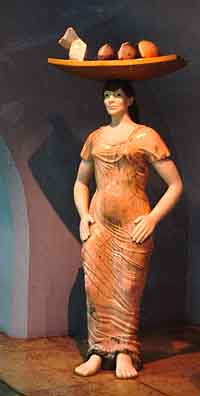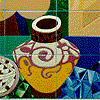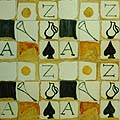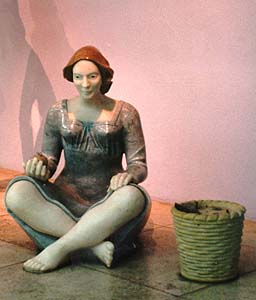 |
 Lisboa Metropolitano In Lisboa's underground metro stations the azulejo finds its most vibrant, most modern and most exciting expression. This began in 1957 when Maria Keil was given the task of designing large wall panels for stations. She believed that a hurried passanger does not stop to contemplate a wall, but rather gains a fleeting impression in passing. Thus she concentrated on abstract geometric forms, like those in Socorro and Rossio stations (not featured here). Keil collaborated with Lisboa Metrpolitano until 1972. | ||||||||
| With her work the azulejo was re-evaluated and consequently re-invigorated. Artists saw azulejos in new ways and their interpretations were varied. Manuel Cargaleiro saw the azulejo as a support for painting (Colégio Militar station 1987). João Abel Manta and Eduardo Nery began to explore Portugal's azulejo heritige and to literally decontruct it. This new interpretation of older styles is was makes Campo Grande station so interesting. My favorite is Laranjeiras station by Sá Nogueira, who uses photo-realistic techniques to mouth-watering effect. | |||||||||
 |
|||||||||
 |
 |
 |
|||||||
 |
 |
 |
|||||||
| If the azulejos were not reason enough to go underground, the metro is also one of the best ways to get around Lisboa. Tickets cost 70$ (Escudos) per journey, but a daily ticket can be had for just 200$. Ten single journey tickets can be bought for 550$. It is very safe during the day. You can visit a few stations right now, by taking the train above. | |||||||||
 |
 |
 |
||
 |
 |